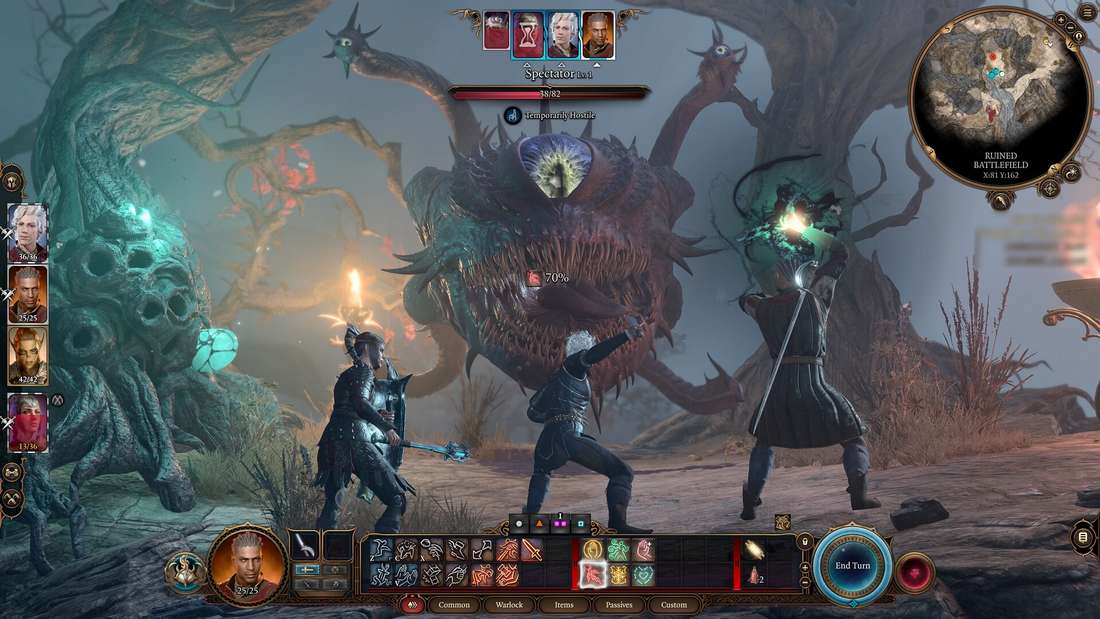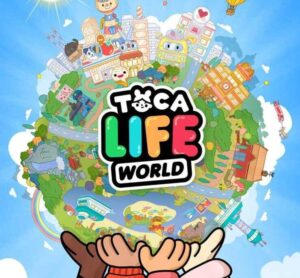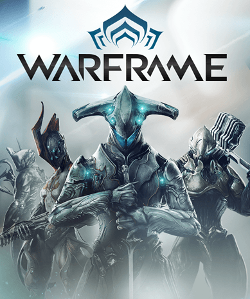Baldur’s Gate 3: Unveiling the Secrets of the Necromancy of Thay – A Comprehensive Decision Guide for Ultimate Power or Peril
Popular Now
 Fall Guys
Fall Guys
 Garena Free Fire: Kalahari
Garena Free Fire: Kalahari
 Gacha Club
Gacha Club
 Poppy Playtime
Poppy Playtime
 Counter-Strike 2
Counter-Strike 2
 PUBG Mobile
PUBG Mobile
 Call of Duty
Call of Duty
 Free Fire
Free Fire
 Auto X Drift Racing 3
Auto X Drift Racing 3
 Brawl Stars
Brawl Stars

In the vast, intricate world of Larian Studios’ critically acclaimed RPG, Baldur’s Gate 3, players are constantly faced with profound choices that ripple through their entire adventure. One of the earliest and most impactful ethical and mechanical dilemmas arises with the discovery of the Necromancy of Thay, an ancient, malevolent tome brimming with dark secrets. Found deep within the Whispering Depths beneath the Blighted Village, this cursed book presents an immediate challenge: what to do with such a potent artifact of forbidden magic? This guide meticulously dissects every available option, detailing the potential rewards, grim consequences, and ultimate impact on your playthrough, ensuring you make an informed decision regarding one of the game’s most enigmatic items.
The Necromancy of Thay is not merely a quest item; it is a narrative lynchpin and a powerful tool that can dramatically alter a character’s capabilities and story arc. Its very presence challenges the moral fabric of your party, forcing you to weigh the allure of immense power against the inherent dangers of ancient, corrupting magic. Understanding the nuances of each path is crucial for any adventurer seeking to optimize their journey through the Forgotten Realms, whether they aspire to heroism or delve into darker ambitions.
The Discovery: Locating the Necromancy of Thay and Its Key
Before you can even ponder its use, you must first locate the Necromancy of Thay. The book is secured behind a locked iron gate within the confines of the Whispering Depths, a perilous dungeon accessible through a well in the Blighted Village or via a crack in the wall within the Hag’s lair. Once retrieved, however, the book remains sealed, requiring a specific component to unlock its secrets: the Dark Amethyst. This crucial gem is found lodged within the maw of a hideous, giant spider matriarch deep within the very same Whispering Depths. Defeating this formidable foe is the first true test before engaging with the book’s profound influence.
Upon acquiring both the book and the amethyst, combining them allows you to access its initial pages. It is at this juncture that your first significant decision point emerges, one that will echo throughout your pursuit of the Absolute and beyond. The choices presented are not merely dialogue options; they are fundamental shifts in your character’s progression and narrative alignment, offering unique spells, passive abilities, or moral quandaries that shape the very essence of your adventure.
 Option 1: Read the Necromancy of Thay Yourself – The Path of Forbidden Knowledge
Option 1: Read the Necromancy of Thay Yourself – The Path of Forbidden Knowledge
Perhaps the most tempting option for many players is to attempt to decipher the Necromancy of Thay personally. This path promises immense power, but at a considerable risk to your character’s sanity and well-being. The process involves a series of increasingly difficult Wisdom Saving Throws, each representing a page turned and a fragment of ancient, corrupting lore absorbed.
The Reading Process and Its Immediate Effects:
- First Page (DC 10 Wisdom Save): Successfully passing this check grants you the permanent passive feature Forbidden Knowledge. This grants you a +1 bonus to Wisdom Saving Throws and Intelligence skill checks. It’s a significant buff, especially for casters or characters relying on lore-based checks. Failing this check results in temporary debuffs, such as disadvantages on certain rolls or even mental instability that can only be cured by a long rest or specific spells.
- Subsequent Pages (Increasing DC): The book contains more pages, each requiring a successful Wisdom Saving Throw. Each success further strengthens your connection to the book’s power, potentially offering more lore insights or minor buffs. However, repeated failures can lead to severe, even permanent, mental afflictions that burden your character. The risks escalate with each attempt, making the full assimilation of the tome’s power a dangerous gamble.
- The Ultimate Reward: Speak with Dead: If you successfully pass all the initial checks and fully absorb the initial teachings of the Necromancy of Thay, you gain access to the powerful spell Speak with Dead. This is not the scroll version; it’s a direct, reusable spell, allowing you to converse with the deceased bodies you encounter, gleaning vital information and uncovering hidden narratives. This spell is invaluable for uncovering plot points, side quests, and character backstories, making the risk potentially worthwhile for players focused on exploration and lore.
Choosing to read the book yourself aligns with a character seeking self-empowerment, often at any cost. It’s a compelling option for those who envision their protagonist as a powerful mage, a scholarly sage, or even a morally ambiguous figure willing to dabble in dark arts for personal gain. The initial power boost from Forbidden Knowledge, combined with the strategic utility of Speak with Dead, makes this a strong contender for many character builds, especially those with high Wisdom or Intelligence scores.
 Option 2: Entrusting the Tome to Astarion – A Vampire’s Ambition
Option 2: Entrusting the Tome to Astarion – A Vampire’s Ambition
Alternatively, if Astarion is a member of your party, you have the unique option to hand over the Necromancy of Thay to him. As a vampire spawn constantly seeking power and a cure for his condition, Astarion is naturally drawn to such a potent artifact. This decision has significant implications for your relationship with him and his personal questline.
Astarion’s Interaction and Consequences:
- Astarion’s Pursuit of Power: If you allow Astarion to read the book, he will undertake the same Wisdom Saving Throws. His success or failure will mirror the player’s experience, granting him Forbidden Knowledge or inflicting debuffs. Critically, if Astarion succeeds, he gains the passive feature and potentially the Speak with Dead spell (though this often manifests more as dialogue options related to his new knowledge rather than a direct spell for the player).
- Relationship Impact: Giving Astarion the book generally earns his approval, reinforcing his view of you as a pragmatic ally who understands his thirst for power. This can be beneficial for those pursuing a romantic or loyal path with the rogue. Denying him the book, especially if he expresses a strong desire for it, will likely result in disapproval.
- Narrative Progression: Astarion’s acquisition of Forbidden Knowledge can open up unique dialogue options and provide context to his understanding of ancient magic and its potential to aid in his pursuit of Cazador. It adds a layer of depth to his character arc, showcasing his resourcefulness and ambition. For players invested in companion stories, this option offers rich narrative rewards.
This choice is ideal for players who prioritize companion development and relationship building. It offloads the immediate risks from your main character while still allowing the party to benefit from the book’s knowledge through Astarion. It’s a particularly fitting decision for those playing a more supportive or morally conscientious protagonist who might shy away from the dark arts themselves but are willing to empower their allies.
Option 3: Destroying the Necromancy of Thay – The Path of Caution
For players who prioritize safety, moral purity, or simply wish to avoid the inherent risks associated with forbidden magic, destroying the Necromancy of Thay is a viable option. This choice ensures that its dark power cannot corrupt anyone, but it also means foregoing the significant benefits it offers.
How to Destroy and Its Outcome:
- The Ritual: The book cannot be destroyed through conventional means. To truly obliterate the Necromancy of Thay, you must place it on a specific stone pedestal found within a hidden chamber in the same Whispering Depths. Once placed, striking the book with a blunt weapon (e.g., a hammer, mace, or a bare fist) will shatter it, releasing a burst of energy and permanently removing it from the game.
- No Rewards, No Consequences: This option provides no character buffs, no new spells, and no direct narrative branches related to the book’s power. It effectively removes the dilemma and its potential influence from your playthrough. For some, this peace of mind is a reward in itself.
Destroying the book aligns with a truly good-aligned character or one who is wary of the corrupting influence of dark magic. It’s a decision that prioritizes the greater good or personal safety over the pursuit of power. While it means missing out on potent abilities and interesting lore, it also ensures you won’t face any of the potential curses or mental burdens associated with its reading. This is a pragmatic choice for players who prefer a straightforward, less complicated playthrough focused on conventional heroism.
The Long-Term Impact: Unlocking Greater Power in Act 3
One of the most crucial pieces of timely information for players regarding the Necromancy of Thay involves its potential for further development in Act 3. Many players might feel the initial benefits are underwhelming or that the risks outweigh the rewards, especially after only gaining Forbidden Knowledge and Speak with Dead.
The Tharchiate Codex and Beyond:
For those who successfully read the Necromancy of Thay (either your character or Astarion), the journey with the tome doesn’t end in Act 1. In Act 3, specifically within the arcane archives of the Sorcerous Sundries in Baldur’s Gate, you can discover another ancient text: the Tharchiate Codex. This secondary book is essential for fully unlocking the Necromancy of Thay’s true, terrifying potential.
- Accessing the Codex: The Tharchiate Codex is locked away in a magical vault within Sorcerous Sundries, requiring clever puzzle-solving or potent spellcasting to access. Once acquired, reading the Codex will curse the reader, but also provide crucial insights into the Necromancy of Thay.
- Ultimate Power Unleashed: After reading the Tharchiate Codex, interacting with the Necromancy of Thay again will present a new option: to permanently remove the Tharchiate curse and gain an even greater boon. This final interaction grants the character who read both books the permanent ability to summon a Ghoulish Retainer once per long rest. This powerful undead ally significantly bolsters your combat capabilities, offering a consistent and formidable minion that can turn the tide of many encounters. Additionally, the curse removal often comes with a potent temporary buff that boosts various attributes, making it an incredibly strong late-game power spike.
This late-game synergy fundamentally alters the calculus of the Necromancy of Thay. What might initially seem like a modest power-up becomes a gateway to truly formidable necromantic abilities, making the initial gamble in Act 1 far more appealing for characters aspiring to become powerful spellcasters or tactical masterminds. The potential for a permanent Ghoul summon is a game-changer for many combat encounters and strategic builds, cementing the Necromancy of Thay as one of Baldur’s Gate 3’s most rewarding unique items if fully utilized.
Conclusion: Choosing Your Destiny in the Shadow of Thay
The Necromancy of Thay in Baldur’s Gate 3 is more than just a piece of loot; it’s a test of character, a narrative crossroads, and a significant opportunity for power progression. Whether you choose to bravely (or foolishly) delve into its dark pages yourself, empower your ambitious companion Astarion, or decisively destroy it to prevent its corruption, each path offers a distinct experience and shapes the very fabric of your adventure.
For those seeking to maximize their power and embrace the forbidden, reading the book yourself and pursuing the Tharchiate Codex in Act 3 offers unparalleled necromantic prowess. For players focused on companion narratives and ethical choices, empowering Astarion or destroying the book provides equally valid and narratively rich experiences. Ultimately, Baldur’s Gate 3 excels in offering meaningful choices, and the Necromancy of Thay stands as a shining example of this design philosophy. Consider your character’s alignment, your preferred gameplay style, and your long-term ambitions before deciding, for the ancient magic of Thay waits for no one, and its influence is profound.








